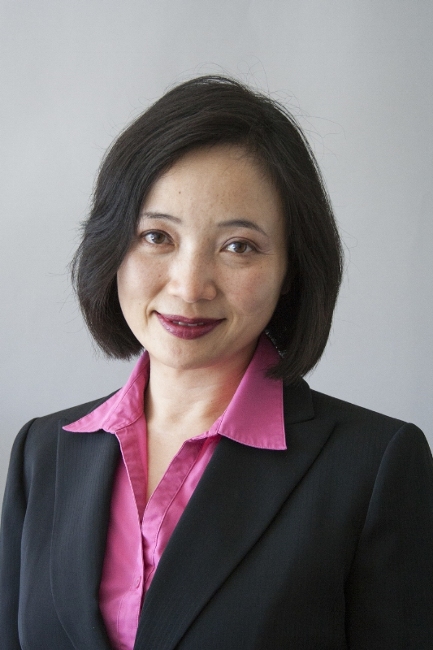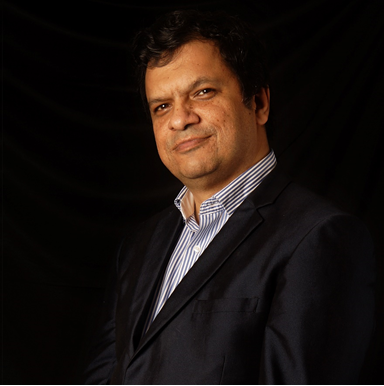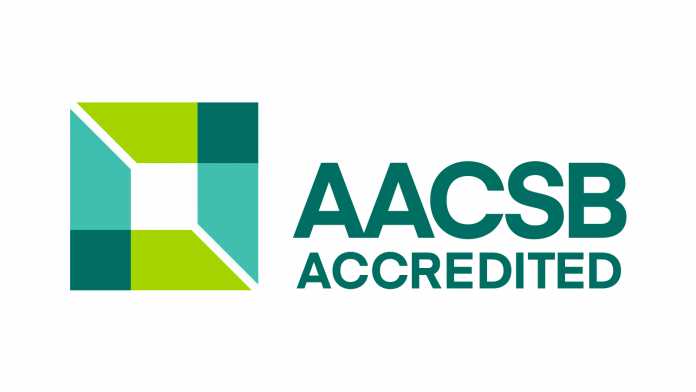AACSB accreditation is a respected and well-known way for Business Schools to show the industry that they are a superior, educational organization that provides high-quality, world-standard education to students. Achieving AACSB accreditation involves a process of rigorous internal review, evaluation, and adjustment. The AACSB Accreditation process may be a seven-year long process, but the high quality teaching environment, a commitment to continuous improvement, and curricula responsive to the needs of businesses make it worth the wait. With a strong presence in 90 countries and over 1600 members under their wing, the AACSB’s global recognition has grown from strength to strength.
We spoke to Annie Lo, Senior Vice President and Chief Officer Asia Pacific, Amy Memon, Manager, Accreditation Services Asia Pacific and Dr. Ranjan Banerjee, Dean, S.P. Jain Institute of Management and Research to tell us what does the AACSB Accreditation process entail, the accreditation criteria and how students can benefit by going to an AACSB Accredited institute.



How is the AACSB Accreditation process carried out?
Annie Lo: The business school has to come to us and become a member. They then have fill out eligibility application to start the process. Once your application is approved by Initial Accreditation Committee (IAC), the process starts officially. It take seven years to finish the process – the first two years require schools to write the Initial Self Evaluation Report (ISER), which is a sort of ‘gap analysis’ looking at where the school stands as compared to where the AACSB standards want you to be. Some schools are able to complete this step of the process quicker than two years. Over the next three years, the IAC is required to give an update regarding the accreditation process. The IAC looks at the school’s progress report and determines if you have implemented changes, have you improved from where you first stood, etc. If they give you approval, the Peer Review team will come and evaluate your school. The Peer Review Team then gives a recommendation to IAC whether to accredit the school or not. IAC then evaluates the Peer Review Team recommendation and your final report, and then come to a decision, which goes to the AACSB Board to be accredited. The entire process is Peer-driven. Evaluation is not done by AACSB staff but by volunteers, who are representatives of schools that have previously been accredited. They are not paid, and do it because they have gone through the process themselves. They are well-versed with the standards and know what it takes for a school to get the AACSB accreditation. We have over 500 volunteers serving on the peer review team. Schools are assigned mentors (who are also volunteers) once they have been approved by the IAC to start the process.
What are the AACSB Accreditation Criteria for Schools?
Amy Memon: There are 15 standards that we mandate which have been slotted into four categories. The first category looks at the school’s mission, strategies, research component and financial strategies. The school should have a strategic management process in place as well as the resources to accomplish what they are trying to.
The second category looks at participants which are the people involved in school activities- the faculty, students, etc. We want to make sure that the school is invested in them and the school supports their faculty in terms of career, and school in terms of educational progression through the program, as well as alumni support.
The third category focuses on teaching and learning which is an outcome-based process. It not only takes into account the teaching, but what the students have learnt as well. So the school works on their curriculum management and updates their curriculum based on what data has been collected from the teaching and learning process. We also emphasize on teaching effectiveness- how effective are the teachers in the classroom, are they doing their research, etc. and how do you support them if they’re not being as effective.
The fourth category looks at academic and professional engagement. It is important that the faculty is doing some research, but they have to be engaged and relevant with the profession. So we look at that balance and make sure that balance is aligned with the school’s mission. Basically we look at schools that have a strong research mission. Then you have schools that are much more applied. Their focus is much more on having an impact with the industry. So when it comes to academic and professional engagement, you must be rigorous and you must have both.
We understand that business schools are unique. They must be engaged with the industry, they must be doing their research, they must have a plan for how their students will learn and what they want the students to take away from their program. Everything is outcome-based; we’re not concerned with the contracts you have with your faculty, or your student-faculty ratios.
What is the difference between AACSB Accreditation versus other types of accreditation?
Amy Memon: There are two types of categories- international accreditation and national accreditation. National Accreditations are not discipline-specific and tend be more of a university accreditation. In India you have AACT, which is more of an approval process than an accreditation, and an NBA which is looking across different disciplines. It has a different focus than AACSB. AACSB is strictly for business schools and we are international accreditors with over 1600 members globally.
Annie Lo: We are the largest business school network in the world and this is very important for students. In my travels I have come across schools whose students look for an AACSB accredited school because they want to be ensured of a proper education. They need to be assured that the school knows what they’re doing. As mentioned in the accreditation process, the schools have to have that quality and engagement with the industry, because as a student you need to know that the school you are a part of is doing everything they can to give you the best education.
How would being in an AACSB accredited school benefit students? Would it lead to better employment opportunities?
Amy Memon: Today it’s all about merit. It’s about what you can bring to the market when you are ready to be hired. What AACSB does is that it ensures sustainability. Years down the line, you’re still going to be very much a part of that school, and the schools we have are going to be around for a very long time. They’re constantly improving. The accreditation process does not stop. We come back every 5 years, and we make sure they’re progressing with their plans and are improving. In our years of operation, there are just a handful of schools that have been denied accreditation. We have also had schools that have had to step-out of the process and start from scratch. At the end of the day it’s not about the brand, but the developmental process that the school goes through to get that high quality education
Dr. Ranjan Banerjee: If as a school you want to get better, it means for every course you know what your students are getting, so your processes are stronger and hence student outcomes are better. Students in an AACSB accredited school are getting a more rigorous learning process. And this is beneficial years down the line. For example, if a person wants to migrate to Canada, the fact that you have this AACSB label is like having a label of quality because of how well recognized it is. If you’re looking at an international exchange process, it is easier between schools that have a common set of exchange processes, and credit transfer is easier. Therefore it is possible for us to improve the student experience in terms of collaborations with international schools or acquiring better faculty. I can’t really say much about placements, but it will possibly improve internationalization in the program, give you a degree that is more recognized globally and your qualification is more globally mandated. The AACSB Accreditation will also attract more international students and improve student experience in terms of diversity.
Annie Lo: We recently gave an accreditation to a school in Japan, and they called me afterwards saying that they have gotten so many partnership requests. This network is very important and you’re essentially a part of a platform that speaks one language, which is the AACSB global standards. They understand each other. If I have to send my student to that particular school, I know that school has good quality and I feel comfortable sending my students there to learn what we’re intending them to. And in today’s world, this international connection is very important because if you meet someone who is also a part of an AACSB accredited school, it doesn’t matter where your school is located, you all are connected.
Why should students choose go to an AACSB accredited school?
Amy Memon: In this world, it’s no more that you decide something and that is what you’re going to be for the rest of your life. People explore several different careers throughout their life. In an AACSB accredited school, we look at how the student learns and how the faculty delivers. I recently had the benefit of meeting a student looking to pursue his MBA. He went to an Indian school which was non-AACSB Accredited and took up marketing. The faculty had no clue about digital marketing because they weren’t doing their research and they weren’t out in the industry. This student wanted to go to an AACSB Accredited school because he knew that the school will be equipped and would enable them to learn cutting-edge concepts, and the curriculum would be designed in a way that met their needs for the future. I think it’s important that you look at a school that is so invested in continuous improvement and has engagement with the industry. This engagement will enable experiential learning and has that network effect with the industry so that you can build your career for today or 10 years later. It is also important to us that the schools continuously provide services for their alumni so the schools are engaged with the students even after they graduate. Companies in the US are very much aware of the AACSB and the quality it delivers.
Dr. Ranjan Banerjee: There are a set of parameters you should use when zeroing in on a school. If you want to be an entrepreneur, there are some schools that encourage entrepreneurship more. There are schools that are stronger in finance and there are some that focus on technology. The criteria would be the quality of the faculty, the school, and the placements. One of the things you want to look at is process quality, and accreditation is one of the strong tools to assess this. I would say look at a balanced set of portfolios where accreditation is one of them. The presence of a strong global accreditation is definitely a positive sign. Also look at the international partnerships the school has. You will find that schools with an advanced accreditation will have stronger global partners.
Annie Lo: If you’re putting down the money, you might as well go to a school that cares about giving you what you want. We require our schools to continuously improve their process. Innovation is very important. We re-visit schools every five years to check on the progress they’ve made, if any. We want to make sure that you are getting a high-quality educational environment so that you’re equipped for the future.






























